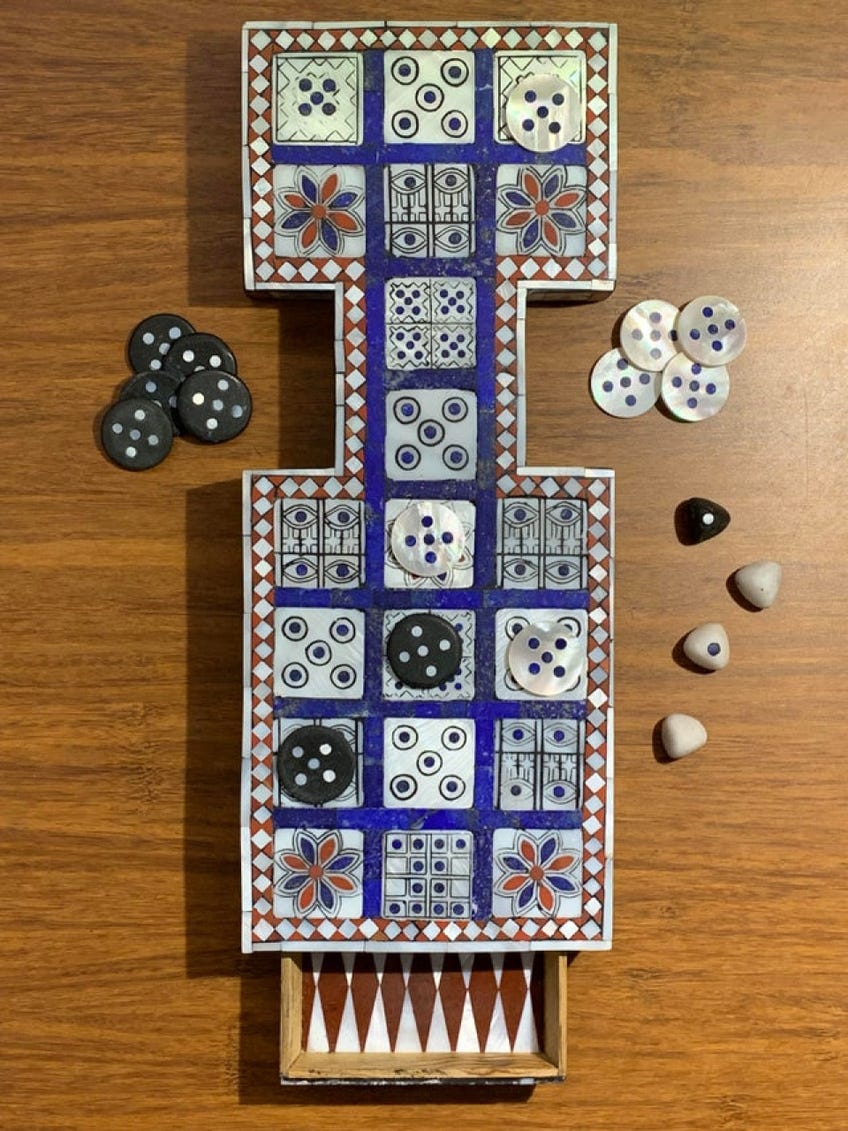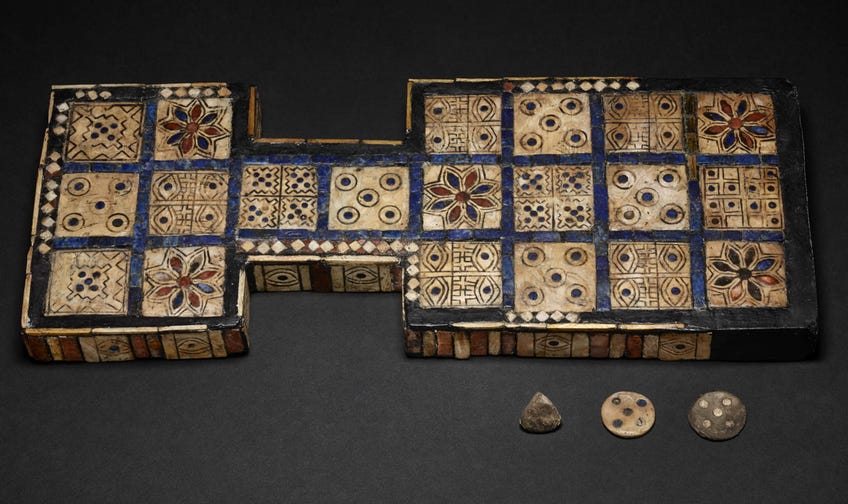Someone spent £3,500 painstakingly - and authentically - recreating the millennia-old Game of Ur at home
Including making their own bitumen.
Board game enthusiasts habitually invest time and money into crafting their own custom boards, boxes or even tables, but one Reddit user spent several months and several thousands of pounds recreating an ancient artefact known as The Royal Game of Ur.
User Veurlatonra posted their frankly beautiful creation to the GameofUr subreddit, a community dedicated to a pastime historians believe has been enjoyed since the third millennium BC in Mesopotamia. The Royal Game of Ur, sometimes called the Game of Twenty Squares, was looted from the Royal Cemetery at Ur in modern day Iraq by British archaeologists. (Note: the practices of, and looting by, 20th-century imperialist archaeology have been roundly critiqued by contemporary historians and museologists.)

While other sites across the Middle East have found copies of the game etched onto tablets, worked in clay or even graffitied on walls, the copies found at Ur showed elaborate carving and precious stone decoration. The board consists of 20 conjoined squares - hence the name - and plays out as a race between two opponents using seven tokens decorated with black and white pips. Four-sided dice are rolled to determine movement, and rules found on tablets describe the Game of Ur as intense, fast-paced and a ripe opportunity for gambling.
Vuerlatonra said they started the project during pandemic lockdown as a way to keep themselves busy but also practise skills in woodworking and lapidary - cutting and polishing stones. A seeming lover of ancient history and cultures, they endeavoured to recreate the board currently housed at the British Museum in London using as many authentic resources and techniques as possible, which proved to be a time-consuming task.
“I started in early April 2020 and committed several hours every single day after work, and almost all my weekends from dawn till dusk,” Vuerlatonra said in a comment. They finally completed the project on February 7th. “While I didn’t tally the hours, a rough estimates [sic] places me at a minimum of 600 hours spent on it.”
They acquired materials such as cedar wood for the box and lapis lazuli for the inlaid decoration from local sources likely used by ancient Mesopotamians. That excluded bitumen - commonly found in asphalt - which is apparently dangerous to handle when pulled from natural deposits, so they simply created their own from “fire coal residue, colophony, and beeswax”. Of course! Other ingredients included jasper, white marble, basalt and mother of pearl.

Perhaps most surprising about the detailed construction, which includes the game pieces and a built-in storage drawer, is that Vuerlatonra accomplished the feat without any adhesives, as Sumerians didn’t have access to bottled wood glue. Any tools were purchased or hand-built to specifications laid out in the field notes and books published by archaeologists of the time. All told, they spent £3518.55 ($4865.91) and quite literally bled to eventually complete their labours.
“Nothing went according to the plan, most of my initial ideas turned out to be not suited at all and I had to redo a lot of things multiple times,” they said. “There were more failures than successes. I also injured myself pretty badly on multiple occasions. But damn that was all worth it.”


